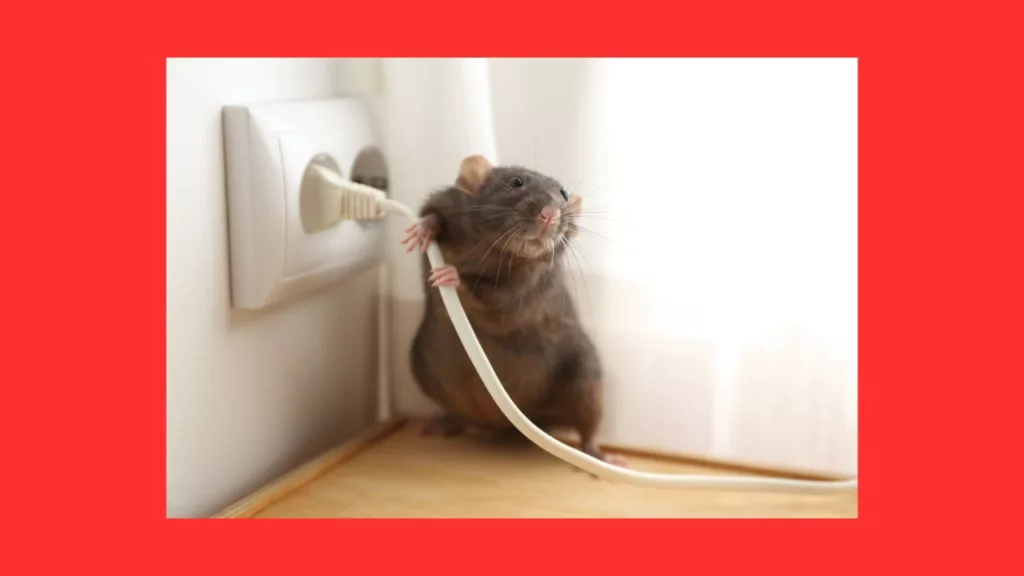The issue of pest control responsibility is a common source of debate and confusion in the realm of landlord-tenant relationships. As a pest problem can cause significant discomfort, health hazards, and property damage, it is essential to understand the respective roles and obligations of landlords and tenants in addressing these unwelcome intruders. In this article, we delve into the question of who bears the responsibility for pest control in rental properties.
Is the landlord responsible for pest control?
In general, both the landlord and tenant have a role to play in pest control. The landlord is responsible for structural issues that allow pests to enter. The tenant must keep a clean dwelling so as not to attract pests. In most states, the lease will state who is responsible for pest control.
This article will explore the critical factors involved and examine the legal considerations guiding landlords and tenants in navigating this often contentious issue. By shedding light on this topic, we aim to clarify the rights and responsibilities of all parties involved and foster a pest-free and harmonious living environment.
Overview of Responsibility

The responsibility for pest control in rental properties generally hinges upon the terms of the lease agreement. The lease is a contractual agreement between the landlord and tenant, outlining their obligations and rights. While the specifics may vary from lease to lease, it is crucial to consider the Implied Warranty of Habitability concept, which will be explained later.
It is common for leases to designate the property owner as responsible for addressing structural problems that can facilitate a pest infestation, such as sealing entry points or repairing cracks. On the other hand, tenants are responsible for keeping the rental unit clean and taking preventive measures to avoid attracting pests. By maintaining proper sanitation and promptly reporting any signs of infestations, tenants contribute to the overall pest control efforts.
While the rental agreement primarily governs pest control responsibility, it’s important to note that specific state laws can override lease provisions. Some states have enacted laws that impose obligations on landlords regardless of the lease agreement, emphasizing the importance of providing a habitable and pest-free living environment.
In most cases, pest control issues in common areas will be the landlord’s responsibility. As a result, the property manager is on the hook for pest control costs.
Tenants and landlords should not solely rely on the lease but be aware of applicable state laws and regulations regarding pest control responsibilities. Consulting local laws and seeking legal advice can ensure compliance with the relevant regulations. This will help establish a harmonious living environment free of pest issues.
Implied Warranty of Habitability

An implied warranty of habitability is a legal concept that means landlords are obligated to provide rental properties that meet specific livable standards. It is an implicit guarantee that the property is fit for human habitation and meets basic health, safety, and sanitation requirements.
The warranty of habitability varies by jurisdiction but typically includes provisions related to adequate heating, plumbing, electricity, pest control, and structural integrity. If a rental property fails to meet these standards, tenants may have legal recourse to seek remedies such as repairs, rent reductions, or even lease termination.
Arkansas is the only state without a warranty of habitability. Arkansas explicitly states: “When you rent a house or apartment, you usually agree to take it ‘as is.’ This means the landlord is not required to provide additional maintenance to the dwelling.“
Every other state in the U.S. has developed its rendition of the warranty of habitability. Some are explicit statutes or regulations, while others recognize it as a common law principle.
Signs of a Pest Infestation

Recognizing the signs of a pest infestation is crucial for landlords and tenants to address the problem swiftly and effectively. Various pests can invade homes and rental properties, causing significant issues if left unattended. Being aware of the signs of pests enables proactive measures to be taken to prevent further damage and ensure a pest-free environment.
One of the critical indicators of a pest infestation is the presence of pests. Whether it’s cockroaches scurrying across the kitchen floor, mice leaving droppings in cabinets, or bed bugs hiding in the seams of mattresses, the physical sighting of pests is a clear sign of an infestation. Additionally, finding nests, hives, or webs in hidden corners or crevices can indicate certain pests’ presence.
Another common sign of pests is damage to the property or belongings. For instance, chewed wires, gnawed furniture, or holes in walls can point to the presence of rodents such as rats or mice. Similarly, wood damage, particularly in window frames or floorboards, may suggest a termite or carpenter ant infestation. Structural damage caused by pests should not be ignored, as it can compromise the integrity of the property.
Unusual and persistent odors can also be signs of pest infestation. Some pests, like rodents, have distinct musty or ammonia-like smells. Strong and unpleasant odors emanating from hidden areas or within walls may indicate the presence of pests such as rodents or insects.
Lastly, pests’ droppings or fecal matter left behind can provide valuable clues. Different pests have distinctive droppings, ranging from small and pellet-like to larger and irregular shapes. Identifying the type and size of droppings can help determine the specific pest species present.
Landlords and tenants can promptly take appropriate measures to address the infestation by being vigilant and knowledgeable about these signs of pests. Whether it involves enlisting professional pest control services, implementing preventative pest control methods, or collaborating to eliminate the underlying causes, early detection, and intervention are essential for maintaining a pest-free and habitable living environment.
Cause and Responsibility
The responsibility for pest control in rental properties can vary based on the cause of the infestation. It is essential to examine the circumstances and determine when it falls under the responsibility of the landlord or the tenant.
In general, the responsibility of the landlord arises when the pest infestation is a result of structural issues or conditions beyond the tenant’s control. Landlords must maintain the property and address any structural defects that may allow pests to enter or proliferate. This includes sealing entry points, repairing cracks, and conducting regular pest management to prevent infestations. The responsibility of the landlord is often guided by specific laws and regulations that outline their obligations in maintaining habitable and pest-free premises.
On the other hand, there are instances where the tenant may be responsible for pest control. If the infestation is caused by the tenant’s actions, such as poor sanitation, food storage practices, or neglectful behavior, the tenant generally bears the responsibility. It is the tenant’s duty to keep the rental unit clean, dispose of garbage properly, and promptly report any signs of pest activity to the landlord. By practicing preventive pest control measures and maintaining a clean living environment, tenants can help minimize the risk of infestations and fulfill their responsibilities in pest management.
Specific laws and regulations can also influence the determination of responsibility in each jurisdiction. Some states may have laws that impose specific obligations on landlords or tenants, regardless of the lease agreement. Both landlords and tenants must be familiar with these laws to ensure compliance and understand their respective roles in pest control. Additionally, proactive and preventive pest control measures can be implemented by both parties to minimize the chances of infestations and create a healthier living environment.
Best Way for a Landlord to Handle Pest Concerns

When handling pest concerns as a landlord, taking prompt and effective action is crucial to maintain a pest-free and habitable rental property. By following best practices and considering relevant laws and regulations, landlords can address pest issues efficiently and fulfill their responsibilities.
Determining Responsibility
The issue of pest control responsibility is a common source of debate and confusion in landlord-tenant relationships. While specific laws and lease agreements may vary, understanding the general guidelines can help determine responsibility. Landlords are typically responsible for maintaining the property’s structural integrity and addressing any pre-existing pest problems. On the other hand, tenants are responsible for keeping the rental unit clean, promptly reporting signs of pests, and practicing preventative pest control measures.
Best Practices for Landlords
To handle pest concerns effectively, landlords should adopt a proactive approach. Regular pest control services on a seasonal basis, such as quarterly inspections and treatments, can help prevent infestations and ensure early detection of any pest-related issues. Hiring a certified commercial applicator or professional pest control company is often the best way to provide comprehensive and effective pest management.
Communication is vital when it comes to addressing pest concerns. Landlords should maintain open lines of communication with tenants, promptly responding to their pest-related complaints and inquiries. It is essential to inform tenants of their responsibilities in preventing and reporting pest issues, ensuring a collaborative effort in maintaining a pest-free environment.
Incorporating specific pest control clauses in lease agreements can also help establish clear expectations and responsibilities. These clauses can outline the respective obligations of both the landlord and the tenant regarding pest control, promoting accountability and compliance.
Landlords should also stay informed about relevant laws and regulations about pest control, including federal, state, and local requirements. Adhering to these legal obligations helps ensure compliance and provides a framework for responsible pest control practices.
Regular inspections and prompt responses to tenant reports are crucial for early detection and intervention. If a pest problem arises, landlords should take swift action to address the issue. Professional pest control services can help eliminate pests, minimize damage, and prevent re-infestation.
In cases where determining responsibility becomes contentious or complex, seeking legal advice from an experienced attorney is advisable. They can provide guidance on specific legal obligations and help navigate any legal disputes related to pest control responsibilities.
By following these best practices and taking proactive measures, landlords can effectively handle pest concerns in rental properties. Ensuring a pest-free environment promotes the health and well-being of tenants and protects the property and its value.
Conclusion
Addressing pest issues in rental properties requires a clear understanding of the tenant’s responsibility and the landlord’s duty. It is crucial to prioritize maintaining a pest-free and habitable living space to ensure the well-being of all occupants.
Tenants must actively participate in seasonal pest control and take preventive measures to avoid common pests. By practicing reasonable sanitation, promptly reporting any signs of infestation, and implementing DIY methods, tenants can contribute to a pest-free home and protect their best interests.
Landlords are responsible for providing a habitable condition and addressing structural issues that can lead to pest infestations. Regular maintenance, such as addressing water leaks and conducting pest control inspections, is the first thing landlords should prioritize to prevent pest control problems. Understanding relevant laws helps landlords comply with legal requirements and fulfill their responsibilities.
In the event of a pest infestation, landlords and tenants should take immediate action. Effective communication and collaboration are essential to determine the responsible party and identify the best way to handle the situation. Landlords should be familiar with legal obligations, including the tenant’s fault in pest control, and be proactive in seeking professional pest control services when needed. Tenants should promptly report pest issues and cooperate in pest extermination efforts.
By addressing pest control issues regularly, ensuring maintenance issues are promptly addressed, and maintaining a unit in good condition, landlords can fulfill their responsibilities and create a pest-free living environment. Timely intervention and adherence to legal requirements contribute to the health and well-being of all parties involved, reducing the risk of health issues associated with pests.
In conclusion, both landlords and tenants must recognize their respective obligations and work together to prevent and address pest infestations. By understanding and fulfilling these responsibilities, landlords, and tenants can maintain a pest-free rental home, comply with legal requirements, and provide a safe and comfortable living space for all occupants.




